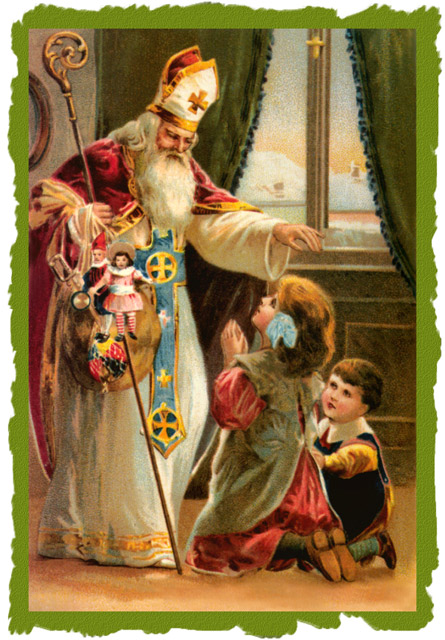
A little bit of history on the feast of Christmas:
The geographical location of the Northern European countries makes the winters there long, cold and dark. In places near the Arctic Circle there may be a little as 3 hours of sunshine a day. No wonder then that the winter solstice, when the days begin to lengthen again, has been a cause for great celebration from times immemorial, marking the returning of the light and the reemergence of life itself. To these people, the symbol of life was the tree, growing up from a single seed, rooting in the earth and branching out in all directions. The tree of choice to embody this symbolism was the fir tree, for one because it is by far the most common tree in these regions and also because it does not lose its foliage in winter and so represents eternity.
A very effective strategy of the Holy Church of Rome in spreading the Christian faith was to adopt important pagan religious customs but cast them in a Christian mold, which was much easier than trying to eradicate them and also made the new religion more acceptable to the pagans. In the case of the winter solstice, this was particularly easy, since to the Christians, Jesus is the Light. It was a complete one-on-one match. And so the ancient celebration of the coming of the new light became the commemoration of the birth of Christ and with that the most important holy day on the Christian calendar.
The Germans were quick to adopt it, in part, you may suspect, because the ancient custom of using the occasion to eat, drink and make merry had been preserved in its entirety. From Germany it blew over to England through the mediation of their kings and queens, who were all related by marriage or birth – and sometimes both. And from there it crossed the Atlantic with the pilgrims to gain foothold in America.
 The practice of gift-giving may go as far back as the Romans, but the actual root of the tradition is the commemoration of Saint Nicholas, bisshop of Myra in what is now Southern Turkey in the 4th century A.D. Saint Nicholas was widely known for his generosity to the poor, in particular children. He is also the patron saint of seafarers and that made him important to the Dutch, many of whom made their living that way.
The practice of gift-giving may go as far back as the Romans, but the actual root of the tradition is the commemoration of Saint Nicholas, bisshop of Myra in what is now Southern Turkey in the 4th century A.D. Saint Nicholas was widely known for his generosity to the poor, in particular children. He is also the patron saint of seafarers and that made him important to the Dutch, many of whom made their living that way.
They brought it with them when they settled New Amsterdam, now New York City, and it became a symbol of the city’s pre-Brittish past after the Revolutionary War.
And so was born the modern American version of Christmas, which has evolved from the celebration of the new light to a celebration of our enormous prosperity.
Santa’s carbon footprint has grown to about a size 16 by now. Good for the economy – not so much for the environment. Much of that is systemic and beyond our control, but there are a few things we can do about it as individuals, starting with the trash.
The amount of trash generated during the holidays is 25% more than the rest of the year, some 25 million extra tons, and a large part of that is the packaging – the wrapping paper, the boxes, the bags, the ribbons and – not least – the styrofoam inserts from shipments from Amazon.
It helps to use recycled paper for wrapping and paper plates and cups instead of styrofoam for serving. All supermarkets accept plastic bags for recycling. And now we have in Tucson the means to recycle Amazon’s styrofoam inserts through The Fairfax Companies on Kolb and Speedway.
It also helps to consider the presents themselves. Electronic devices make wonderful gifts, but are the most costly of all in terms of environmental impact. Subscriptions, theater tickets and such make great presents too and their environmental impact is relatively negligable.
When it is all over, there are several organizations in area, such as UofA’s Compost Cats, who will accept your tree for mulching and composting, so that they may sustain next year’s generation of trees.
Because one thing has not changed since those ancient times: the greatest gift of all is still the emergence of new life from the frozen ground.
Happy Holidays!
(Broadcast 4:32)
P.S. Pima County has published more tips for greening the Holidays.

